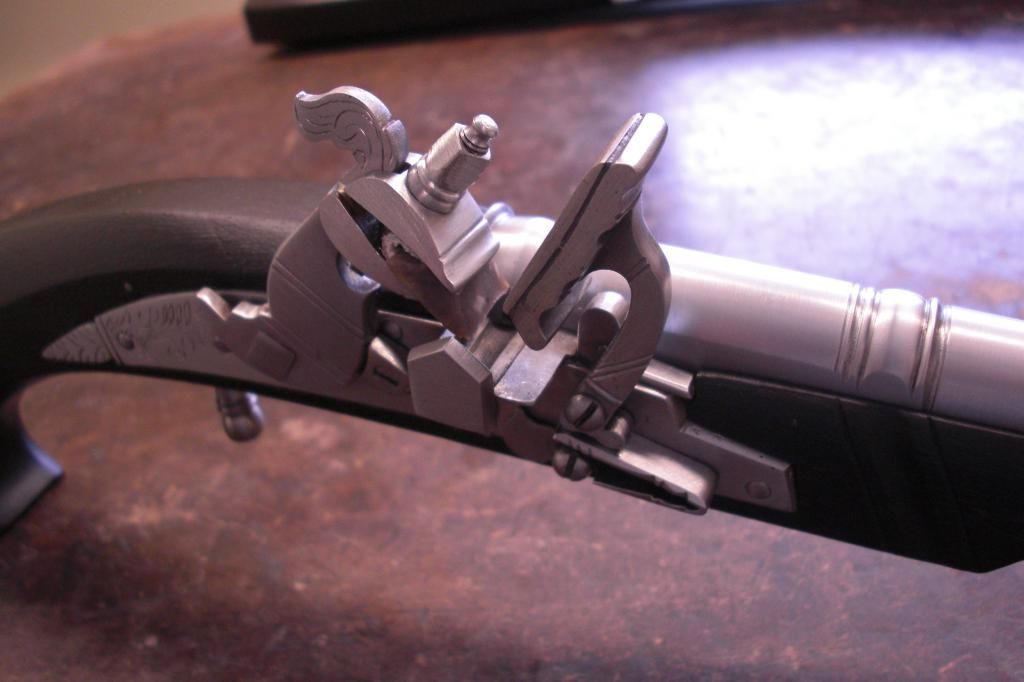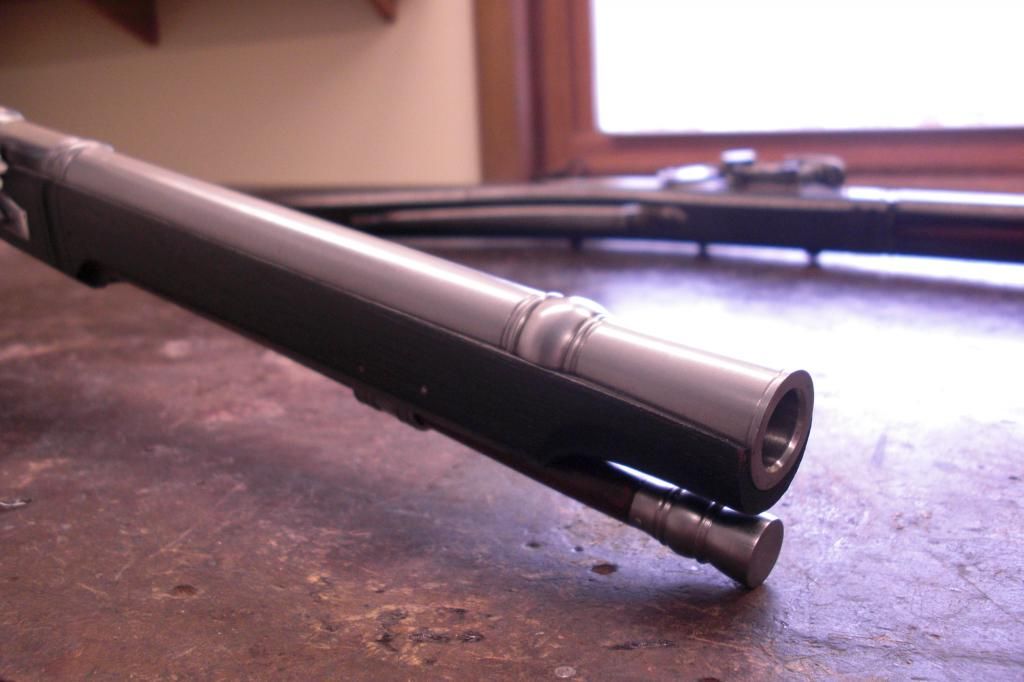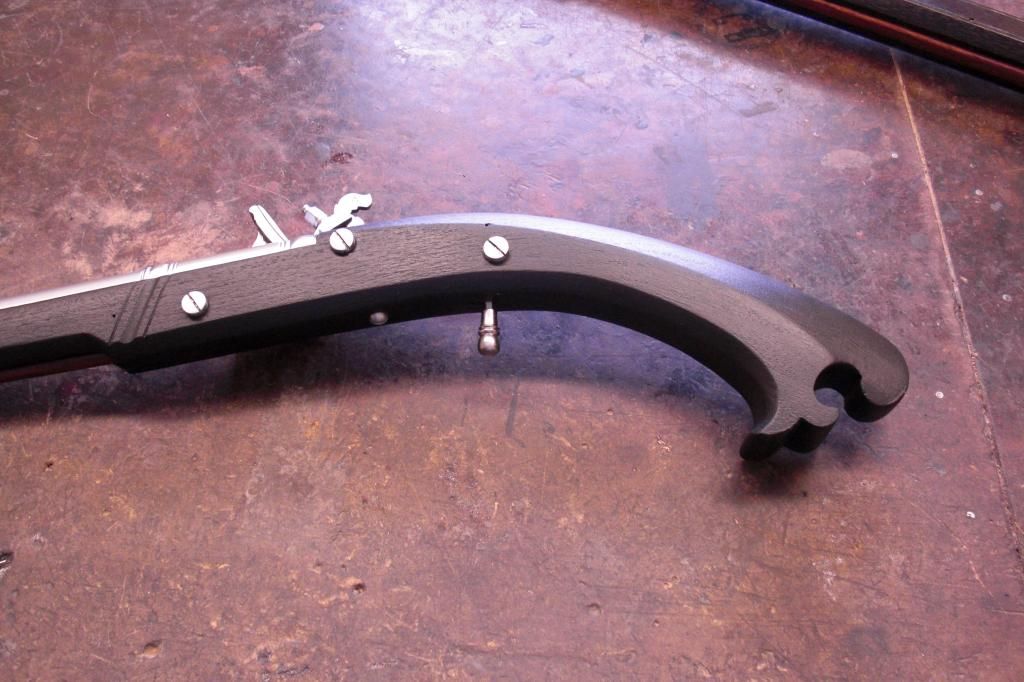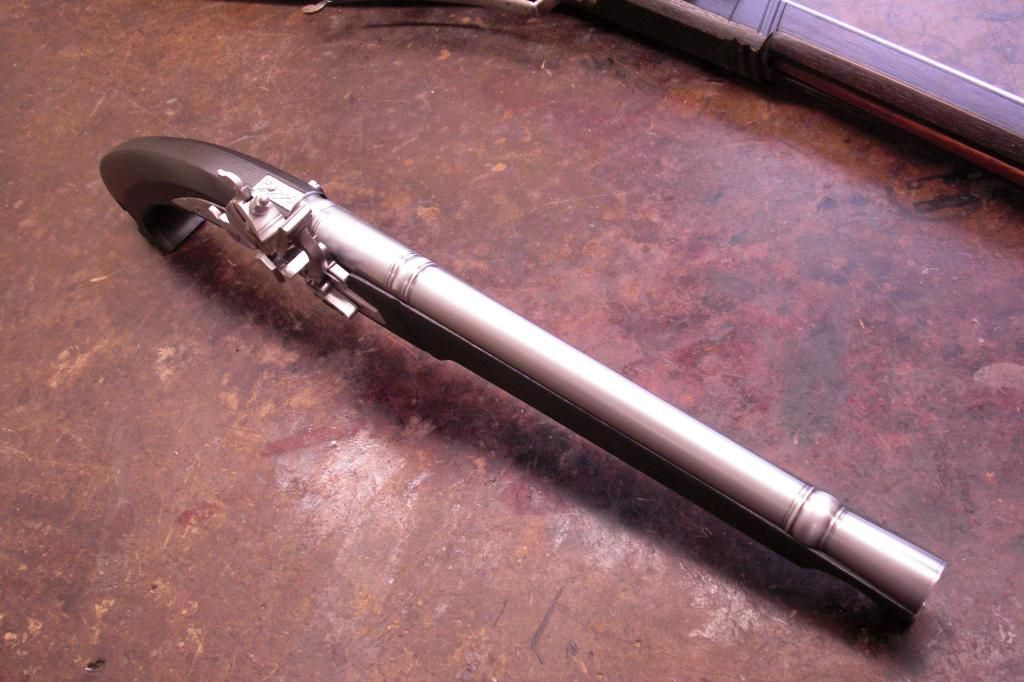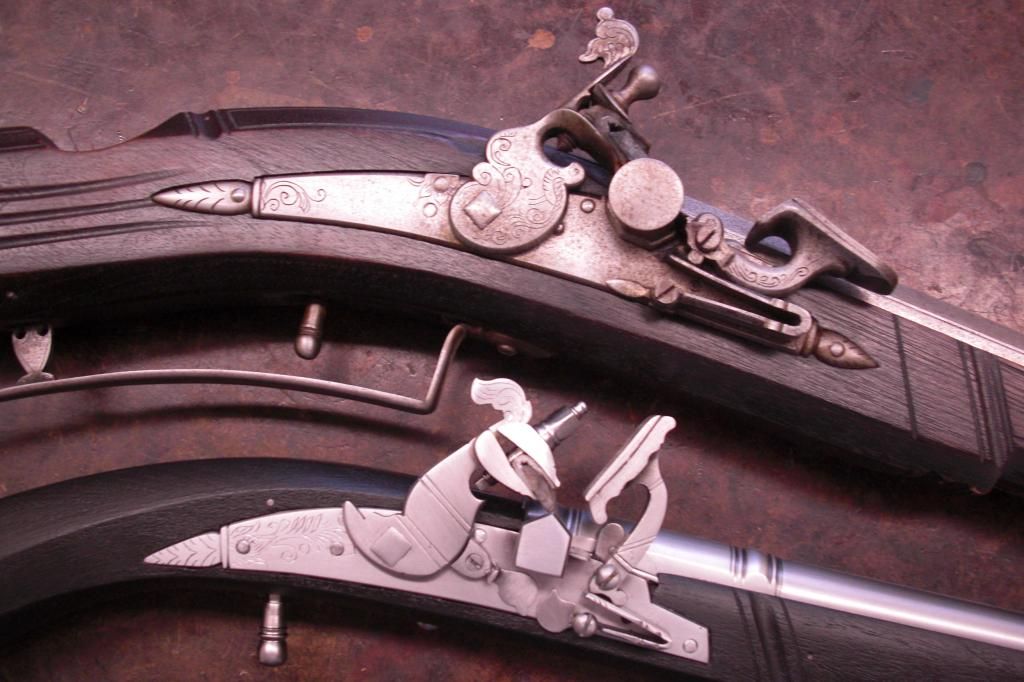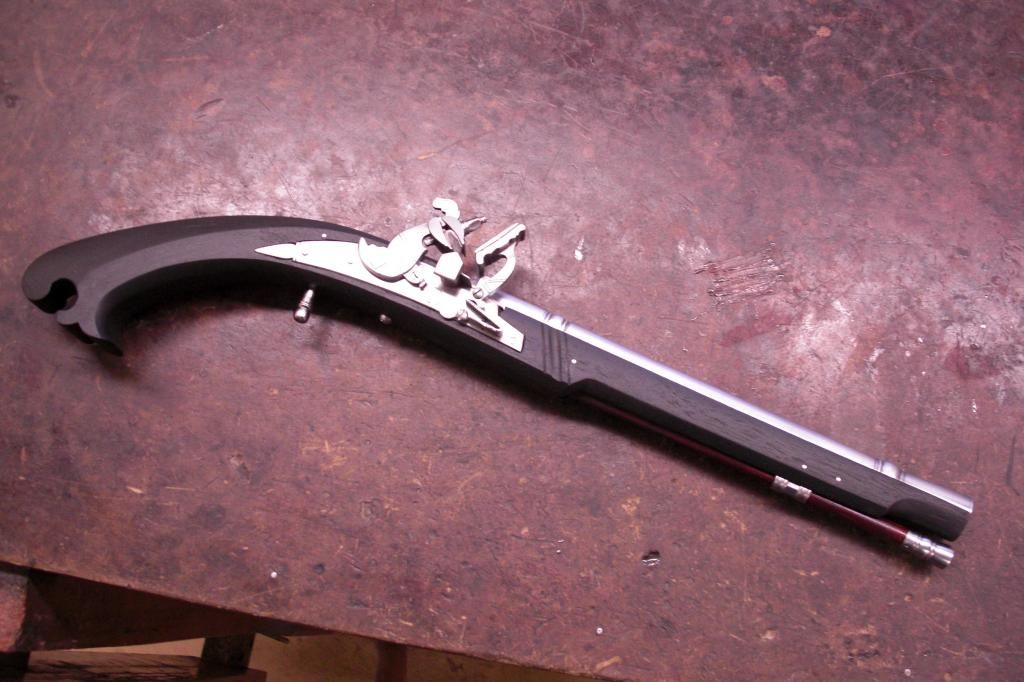Here are some images of a new Scottish snaphaunce pistol. This stock style is one of three that were in fashion from about 1580-1620. Most Scottish guns of these times were stocked in brazil wood and elm. This one is stocked in walnut as the other 2 woods are no longer obtainable. You will see this pistol is finished in a black format - this is called an Ebonized finish - quite common in these times. Most notable, the lock on these early Scottish guns used an awkward threaded post with a nut to tighten the flint jaws. I'm finding its a bit ruff on the fingers to cock and requires a spanner wrench to change flints, much like that of a wheellock. At present, I'm using a 1/4 box wrench to do this; but, later I will make a period correct tool. None have survived, but I've got a good idea of what it would look like. Barrels on these pistols were quite fancy - many were made of brass. This one is of modern steel and is .49 cal at 11 1/2" in length. Ramrod pipes were just coming into use at the time. This gun has an early form taking styling queues from the barrel. As with both Scottish and English pistols of this time, there is no trigger guard and the tang screw comes up from the bottom of the stock. This particular stock shape is of the earliest found on Scottish pistols. I fine it holds and points very good and comfortably. This stock is very plain with no art work just like the 2 Scottish pistols in the Dresden museum which are dated 1598. We know that Scottish guns were brought to contact period Virginia - pieces and complete locks have been unearthed at sites around JamesTown. In 2006, a completly intact Scottish snaphaunce pistol was raised from a well in the JamesTown fort. The pistol in my post was inspired by this find and is of the same time period. Weather and time allowing, next week I'll test fire the pistol. There's no front sight -no Scottish pistols have them - so firing will be at very close range, just out of knife/sword/warclub thrust. I do believe pistols like this were brought over by English military personnel assigned to train the colonist and help structure a force capable of defending itself. When closely studied, there's no one else who would have reason or the money to own such a weapon. Why a Scottish pistol? Many for profit English soldiers served in Scotland before leaving for adventures in the Virginias. G.S.
